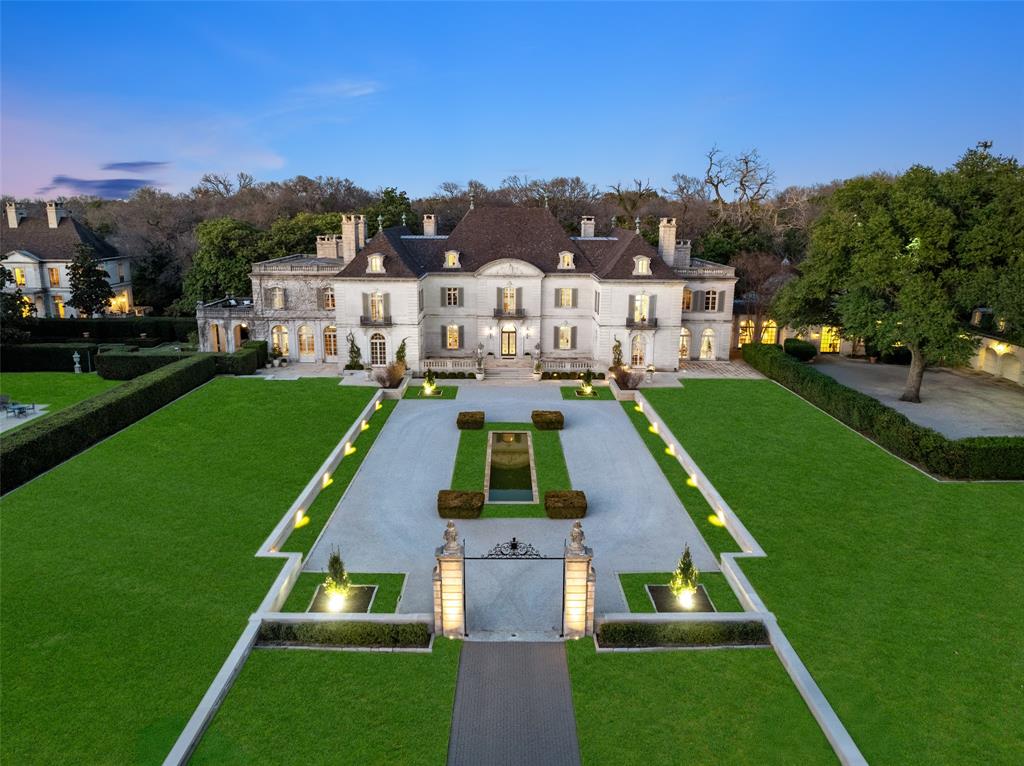Peter Marino, International Architect
Thoughts on the Contributions of Architect Peter Marino
Peter Marino, FAIA, after initial collaborations with Philip Johnson in the late 70s, has grown his practice to a team of 80 architects and 25 interior designers with offices in New York City, East Hampton, Philadelphia, London and Paris working on institutional, commercial and residential projects. Peter Marino originally worked for I.M Pei after he graduated from Cornell University. He also worked for Skidmore, Owings, & Merrill. His current work ranges from the interior design of Valentino’s private yacht, retail spaces for Giorgio Armani and Chanel, to the St. Patrick’s Cathedral in New York. Dallas is fortunate to have three major projects designed by Peter Marino. He was the renovation architect of two of the most important houses in Dallas, one in Volk Estates designed by John Scudder Adkins and one in Mayflower Estates designed by Maurice Fatio, along with a new home in Preston Hollow. Peter Marino, an international architect and interior designer, is known for his designs with classical homes, french style homes, and neo-classical homes.
Find a Peter Marino Architect Designed Home for Sale
Douglas Newby specializes in selling architect designed homes off-market that are not in MLS. Retain Douglas Newby to help you purchase a Peter Marino designed home off-market. Also Contact Douglas Newby to represent you for purchasing a Peter Marino designed home that is in MLS.
Example of Homes Architect Peter Marino Designed
Crespi Hicks Estate – Finest Estate Home in America
Architect Maurice Fatio Designed the Crespi Estate
Crespi Experience – Crespi Insights

To Find Out More About the Crespi Estate, Contact Douglas Newby
From previously selling the Crespi Estate, Douglas Newby intimately knows the attributes and detriments of the Crespi Estate better than anyone in Dallas. The Crespi Estate home is now on its fourth property and home configuration as the home is currently being offered for sale on approximately 15.69 acres.
I probably know more about the Crespi Estate than any other home in Dallas
Douglas Newby
Originally, the home was sold on 20 acres with its original ceremonial drive cresting over a hill, providing a Biltmore Estate effect.

Then the next owner of the property offered the home with 25 acres, with the main drive traversing the property from Hollow Way. The additional five acres had been added to the estate to provide a service drive along the tollway. Next, the now 25 acres were divided up into smaller lots, eliminating the original ceremonial drive and also eliminating the sweeping entrance drive that traversed the property from Hollow Way. This made the service drive along the tollway the main entrance to the Crespi Estate home. After the Crespi Estate property was divided into smaller lots, the Crespi Estate home was offered on approximately 10 acres. While large homes have already been built on the original front yard of the Crespi Estate, now three of the proposed lots, not yet developed for homes, are being offered in the current configuration of the property to allow the back yard to be better visually protected. The new listing broker now has the current configuration of the Crespi Estate home on 15 acres with a new listing price of $64,000,000.
The original 1939 Crespi Estate has a storied and glorious past. It will be interesting in a few years, after all the newly created lots get built on and the property and the Crespi Estate home get sold, what the future might bring to this development.

Crespi Estate 5619 Walnut Hill – More Building Less Land
The third iteration of the Crespi Estate is on reduced acreage with the entrance next to the toll road at the new address of 5619 Walnut Hill Lane. The Crespi Estate home is twice as large as what Maurice Fatio originally designed but it is on half as much acreage. You can see over 100 photographs of the Crespi Estate on the full acreage at 10000 Hollow Way by reading further. Or you can see photographs of the original Crespi Estate at 5555 Walnut Hill.
Price Incongruities in Architecturally Significant Homes
Architecturally significant homes like the Crespi Estate have widely divergent prices. Some of these architect-designed homes are high concept homes, some are historic homes, others are period modern homes. These can be hard to understand the value because they do not have a 21st century condition or finish. Other architecturally significant homes distract attention from the fabulous sites they are on that the original architect selected causing the home to sell for even less than the lot value. Some architecturally significant homes go on the market at twice what they are worth or what they will sell for because the price misses the mark of what the current market requires. Other architecturally significant homes go unknown and unrecognized and are offered at a fraction of their real worth.
Douglas Newby is Best Qualified to Represent You as a Buyer’s Agent

Agents who are your cousins, neighbors or friends might serve you well if you are looking for or selling a generic home that matches all the comparables on the street. Douglas Newby best understands Architecturally Significant properties. He will be able to best help you with the Crespi Estate, or any Architecturally Significant Home. Contact Douglas Newby to represent you as a buyer’s agent. Below you can read further about the Crespi Estate.
An Estate Home that Exemplifies Architecturally Significant
There are faux estate homes, builder homes, spec homes, development homes, but proper estate homes are much different. The finest estate homes elevate the cultural consciousness.
Inspiring Cultural Consciousness
While generic homes tire me, significant homes inspire me. I have found one home that is truly profound – the Crespi / Hicks estate. When I visited this estate home on its winding approach and then upon entering the home, I felt an adrenaline surge as well as, simultaneously, a feeling of calm, much the same sensation as an athlete experiences in the “zone.” I see how it inspires others, too, in much the same way. I have watched men stand up straighter in the presence of such powerful architecture and women become softer, even lovelier, in the presence of perfect proportions and subtle refinement.
Crespi Hicks Estate Personifies Essential Characteristics of an Estate Home

When searching for the finest estate home, I have found there are essential characteristics of an estate home. For instance, there must be vast land cared for in an ecologically friendly way and the home needs to be close enough to a vibrant city center so as to enable a family to live in the home as a primary residence.
In addition, an estate home must be awe-inspiring and still have the gentle warmth and intimacy desired by a family. It should offer the finest environment and opportunities to explore all aspects of life, entertaining, working, playing, studying, enjoying family or retreating within oneself to reflect.

Also essential, a significant estate home must have a rich architectural pedigree: the genius of the original architect in creating perfect proportions; the brilliance of a renovation architect in furthering the completion of the home; the elegance of the era in which the home was built (an era when royalty, aristocrats, industrialists, titans and United States presidents would visit or stay for a season); the history – i.e., the stories the home has to tell; and, most important, the vision of the estate home owner, the architectural patron. It is this patron of the arts who has the eye, passion and respect for creating an estate home that transcends time – a home that is both aesthetic perfection as well as a truly livable home. A magnificent estate home is only possible when the owner successfully draws from the past and propels the original design forward in a subtle and graceful way into the 21st century.
John Scudder Adkins – Turtle Creek – Volk Estates

6801 Turtle Creek Boulevard, Dallas, Texas
Beautiful Residence Designed by John Scudder Adkins
In 1929 Colonel Alvin and Mrs. Lucy Ball Owsley built one of the most important homes in Dallas. They retained John Scudder Adkins of Cincinnati, Ohio, to design this neo-classical home with French influences in the architectural spirit of McKim, Mead and White. They christened this three-story home faced in a random pattern of Indiana limestone “Mansfield.” Mrs. Owsley was the heiress to the fortune of the Ball Jar Company, as Mrs. Owsley was meticulous and involved in the original design; the current owners were equally involved in the renovation. They worked with Peter Marino of New York and Bill Booziotis of Dallas. This project introduced Peter Marino to Dallas where he has completed two other important projects. The exquisite renovation that took place over 3 1/2 years from 1991 to 1994. This successful endeavor rejuvenated the interest in Volk Estates, now the most prestigious neighborhood in the Dallas.
Homes for Sale in MLS Designed by Peter Marino
There is currently 1 Peter Marino designed home in MLS offered for sale.
 For Your Convenience Download the DougNewby App
For Your Convenience Download the DougNewby App
This DougNewby Significant Homes app reflects his specialization in architecturally significant homes, modern homes, historic homes and estate properties. In addition, this app allows instant access to all MLS listings with high-resolution photographs and full property details that are updated every 18 minutes.
Homes Sold in MLS by Architect Peter Marino
See 0 recent examples of homes designed by Peter Marino sold in MLS.
No MLS Home Listings.





